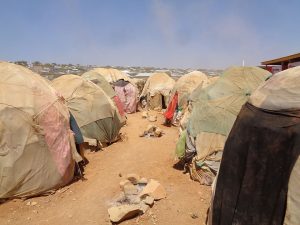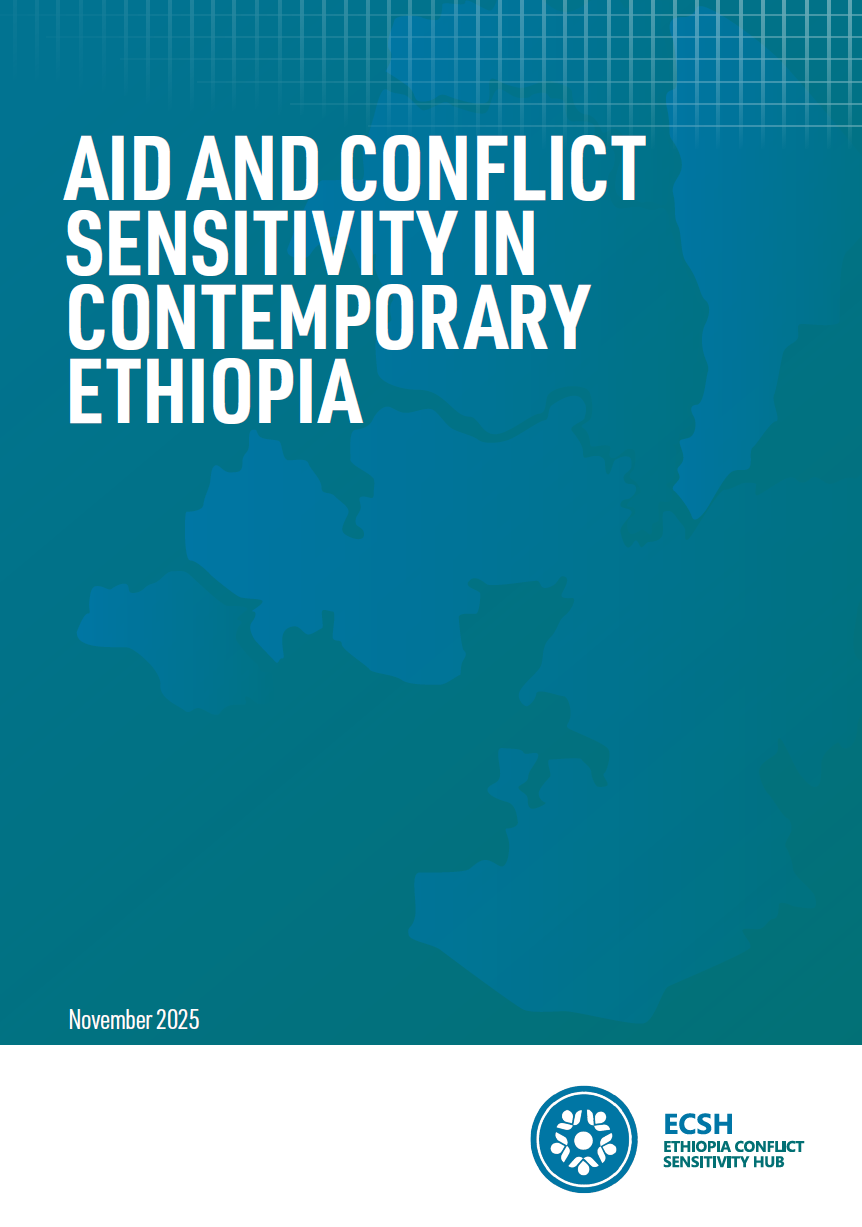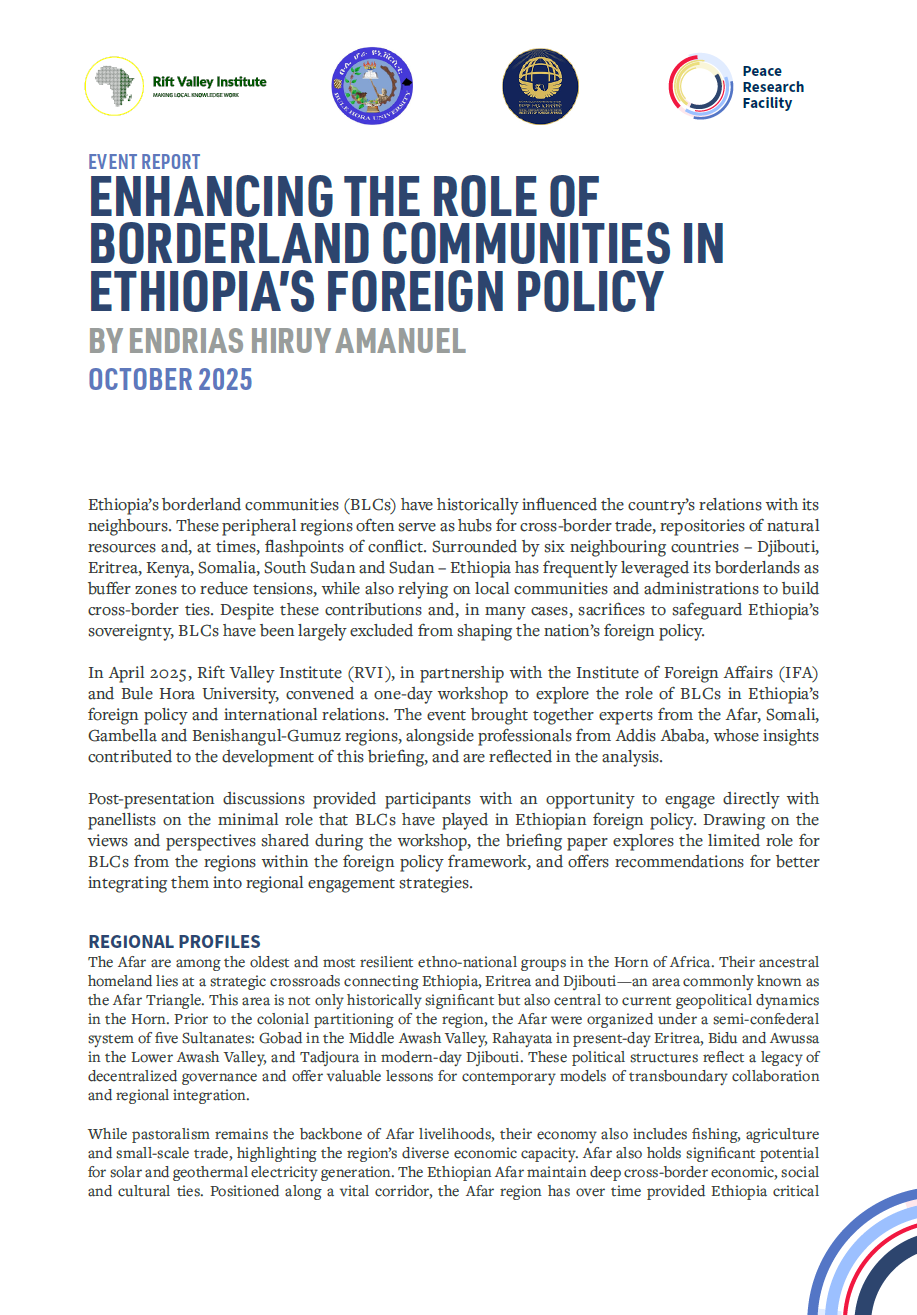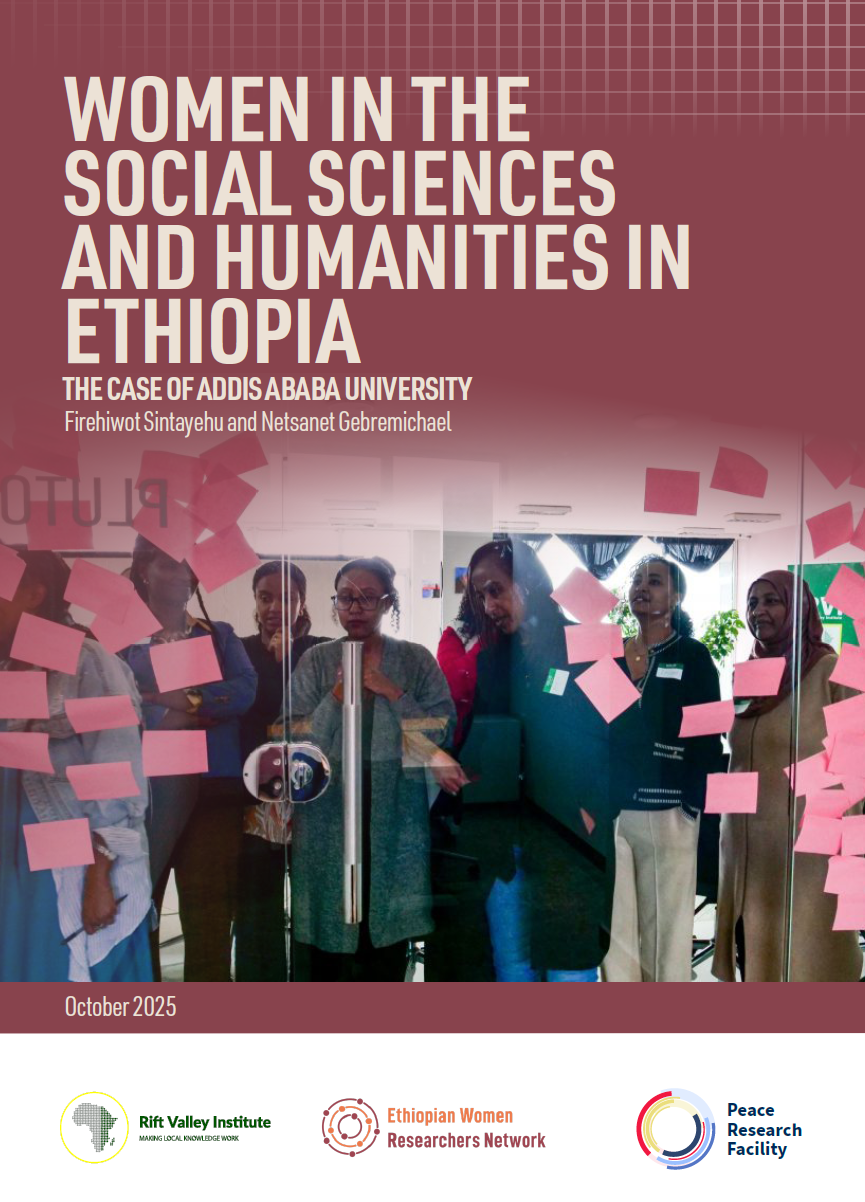This blog is the third in a series published by the Rift Valley Institute to help understand the causes of the drought-related crisis in the Somali regions of the Horn of Africa. It is a product of the UK government’s XCEPT (Cross-Border Conflict Evidence, Policy and Trends) research programme. Read blog 1 on the drought in Somaliland here; and blog 2 on the drought in Somalia’s Bay and Bakool region.
One of the worst droughts in recent history is currently devastating the Somali region of Ethiopia after last year’s spring, summer and autumn rains failed in most parts of the region. Water and pasture have been reduced dramatically within a very short time period, disrupting pastoral and agro-pastoral livelihoods.
The alarm bell was first sounded in October 2021 when a team of international aid organisations, local NGOs and zonal officials established that Dawa zone was facing major water shortages even before the main dry season (winter) had arrived. Subsequently, drought has engulfed almost all of the Somali region with the exception of Faafan and Sitti zones.
Observations from Aden Warabe
At the beginning of February this year I visited Aden Warabe, a kebele in the west of Daroor district – around 50 km north of Aware – that connects the western parts of Aware and Yo’aale districts with neighbouring Somaliland. I was familiar with the locality and its community, which I had visited previously during both wet and dry seasons. On my way to the village I considered the prospect of not being able to find camel milk, a delicacy I usually enjoy when visiting rural areas, due to the drought. When I finally arrived in Aden Warabe, I noticed with surprise that drought displaced pastoralists from neighbouring districts Yoale, Aware, Gunagado and the northern parts of Qorahay outnumbered the local population.
I sat with Hassan, a 61-year-old pastoralist from south of Gunagado, a locality some 110 km south of Aden Warabe predominantly inhabited by Reer Haaruun members of the Ogaadeen clan family. Hassan managed to reach here after he and his family trekked their livestock around 350 km in search of pasture and water. He left some of his elderly relatives as well as weaker sheep and goats in his home area where he had struggled to deal with intensifying drought conditions since November last year.
Hassan’s journey was long and difficult. He first moved towards a place called Nusdariq near Marsin and while pasture in this area was slightly more abundant than in Gunagado and its surroundings, water was still scarce. For this reason, he continued his journey northwards to the west of Gaashamo – a town 45 km from the Somaliland border. Unfortunately, there was no water in Gaashamo either. He returned back to the west, hoping to find water in the Balliyonis borehole 35 km south of Daroor. But, when he arrived at the borehole with his livestock he found that the water pump had been broken for seven days. He couldn’t afford to wait until the technician from Jigjiga arrived to fix it and consequently moved to Aden Warabe where I met him.
Although Hassan and his livestock had made it to Aden Warabe, he and many other households were unable to draw sufficient water from the local privately owned water cisterns, known as birkeds.
To make things worse, local pastures were overrun by the large number of pastoralists who had migrated to the area in the last two weeks. As a result, Hassan and many of his colleagues were preparing to move their livestock across the border to Somaliland. Hurre, a 73-year-old relative of Hassan, told me that he planned to cross into Somaliland on the day we met. To do so both had to leave their sheep and goats near Aden Warabe, which would be looked after by female members of the household who remain in the area. Only camels are deemed strong enough to weather the long journey into Somaliland. The drought had forced both Hassan and Hurre’s families and livestock to split up for a second time after leaving their native Gunagado weeks earlier.
Failure to prepare
I asked both men for their opinion on how the drought in the region could be better managed, particularly to reduce the impact on pastoralist communities. Hassan and a local villager quickly responded with the old Somali saying ‘Abaari gu’bay dhacdaa’, which in English translates to ‘drought takes place in spring’. It made me think of the Persian adage, ‘a good year is apparent during the spring’. Both sayings highlight the fact that rainfall patterns during spring determine the likelihood of drought in the ensuing summer and autumn. The elders thus pointed out a basic early warning mechanism, arguing that assessing drought conditions in autumn is too late as rains need to be monitored earlier in the year.

Ethiopia’s national and regional news outlets have both failed to cover the drought and the associated displacement – including the cross-border movement of people I observed in Aden Warabe – with the seriousness it deserves. Even though I am based in Jigjiga, which is in the Somali region, I didn’t know much about the drought’s impact before discussing this with elders and other pastoralists on the move. Regional authorities, assisted by international agencies, have stepped-up their response since December last year, but this has been largely reactive and not based on a pre-existing plan and preparations for a drought of this type. Food items, fodder for livestock (though negligible) and water have now been distributed in many drought affected parts of the region.
Unfortunately, Hassan, and many like him, has not received any such assistance since he has been on the move. He said that he was not aware of locations where he could receive this kind of help. In general, neither those in need nor aid providers know the whereabouts of the other when it is important that they can each be located in these difficult times. This is one reason why many pastoralists have moved across the border into Somaliland.
Making the situation worse is the fact that the government has restricted access to fuel since November 2020 in efforts to counter its illegal export. This means that those who might otherwise have been able to transport water in trucks to their livestock have been unable to do so. Consequently, this anti-contraband campaign has further squeezed the options for communities trying to survive the challenges of the drought.
Political criticisms
During the drought, the president of the Somali region, Mustafe Mohamed Omer, has come under criticism for his administration’s failure to properly prepare for these events. The criticism has been combined with other political differences related to the war in the Tigray region. Opposition groups in the Somali region have complained that Mustafe Omer too easily sided with Prime Minister Abiy Ahmed in the war with the Tigrayan People’s Liberation Front (TPLF).
Some opposition parties in the region, particularly the Ogaden National Liberation Front (ONLF), have also complained about the way that Abiy Ahmed’s Prosperity Party handled the 2020 national election, saying that the process was unfair.
A consortium of opposition groups even accused the Somali region administration, with no supporting evidence, of covering up the full extent of the drought for political reasons – an accusation the regional authority has denied. They also accuse the regional president of having pro-Amhara sympathies and therefore not protecting Ogadeen interests in the region.
Cross-border strategies for survival
After talking to a number of elders in Aden Warabe, I realised that many Ogadeen pastoralists were preparing to cross into Somaliland, and many had already done so. This is an important part of the survival strategy of pastoralists during periods of drought.
Nasir Aideed, Somaliland’s Deputy Minister of the Interior, confirmed that over the past few weeks many Ogaadeen pastoralists had crossed into Somaliland to escape the drought in the Somali region. He estimated that over three thousand families and their livestock are currently in different parts of Somaliland including Gabiley, Maroodijeeh (Hargeisa area), Daad-madheedh, Togdheer, and Ainaba in Sool region.
Such events have historical precedents. For example, a report by British colonial officer John Hunt in 1945 observed how Ogaadeen pastoralists had watered their camels in the outskirts of Somaliland’s capital Hargeysa during a drought in 1943, although Ogadeen leaders I spoke to said that this only happened during extremely severe and historically notable droughts.
The time that I spent in Aden Warabe reinforced how important mobility is to pastoralists during drought. In the Ethiopian Somali region, this includes cross-border movement, particularly into Somaliland. Policies that facilitate existing cross-border migration patterns and trade are a potential positive measure to maintain the resilience of communities in this region and will contribute to their economic recovery after the current drought has passed.
Musafe M. Abdi is a research with the Rift Valley Institute. He is the author of the report Regularly Irregular: Varieties of Informal Trading in the Ethiopia-Somaliland Borderlands, also written for the XCEPT programme.




